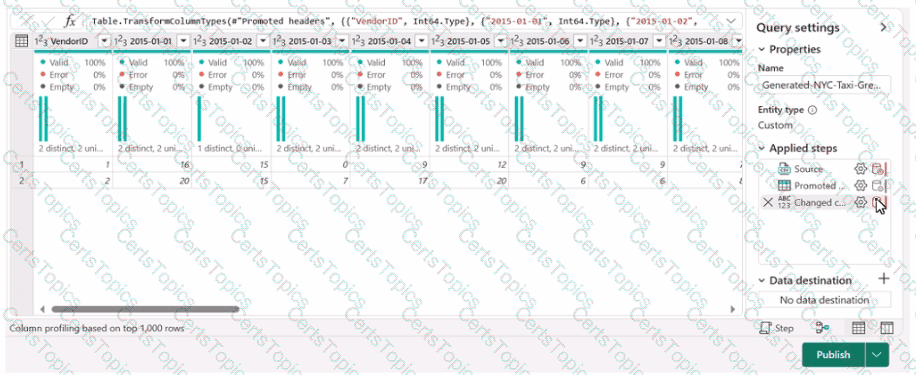You need to ensure the data loading activities in the AnalyticsPOC workspace are executed in the appropriate sequence. The solution must meet the technical requirements.
What should you do?
You have a Fabric tenant that contains JSON files in OneLake. The files have one billion items.
You plan to perform time series analysis of the items.
You need to transform the data, visualize the data to find insights, perform anomaly detection, and share the insights with other business users. The solution must meet the following requirements:
♦ Use parallel processing.
♦ Minimize the duplication of data.
♦ Minimize how long it takes to load the data.
What should you use to transform and visualize the data?
You have a Fabric tenant that contains a lakehouse. You plan to use a visual query to merge two tables.
You need to ensure that the query returns all the rows that are present in both tables. Which type of join should you use?
You have a Fabric workspace named Workspace1 that contains a data flow named Dataflow1. Dataflow1 contains a query that returns the data shown in the following exhibit.

You need to transform the date columns into attribute-value pairs, where columns become rows.
You select the VendorlD column.
Which transformation should you select from the context menu of the VendorlD column?